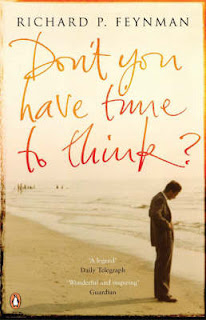
Rashomon is a movie by the legendary Japanese director, Kurosawa Akira. In the movie, a traveling pair of husband and wife fell victim to a bandit. The bandit was caught and an investigation was launched. But as the criminal, the victim and the witness describe their point of views, the story becomes very complicated as some of the details given begin to contradict. A more recent film which also uses this storytelling technique is Hero, starring Jet Li and Tony Leung Chiu Wai.
Psychologists have borrowed this idea to describe how people who went through the same experience may have different views and understanding of what happened. Known as the The Rashomon Effect, this concept highlights the subjectivity of how people perceive things. The different views may contradict one another, but they are also plausible at the same time.
I haven't watched Rashomon the movie, so I guess Rashomon and Seveteen Other Stories is the next best thing.

Rashomon and Seventeen Other Stories is a short story anthology by another master, Akutagawa Ryunosuke. Rashoman the movie is in fact based on two of Akutagawa's short stories, Rashomon and In a Bamboo Groove. Kurosawa adapted the story of In a Bamboo Groove as the movie's plot and Rashomon as the movie's setting (somewhere during the Heian period).
Akutagawa is revered as a master for good reasons. One of it is his ability to write about the many periods in Japanese history. O-Gin touches upon the Genna period, when Christianity began to spread on Japanese soils. The Story of A Head that Fell Off — an amusing tale of mortality and repentance — takes place during and after the Sino-Japanese war (fought in order to win Korea). The final part of the book contains Akutagawa more autobiographic and contemporary pieces, like The Baby's Sickness, his struggle between a successful father and an accomplished writer; and Life of A Stupid Man and Spinning Gears, are haunting and melancholic self-accounts that were published posthumously. One story in particular, Hell Screen — about a despicable artist obsessed with painting scenes from hell and ending up paying dearly for it — simultaneously frightened and delighted me.
I did have some doubts about reading something classical like this book. Maybe it is my misplaced idea that classics, especially a foreign one, may be overwhelming wordy. Instead, the book surprises me with its clarity and humbleness. It is anything but lofty. Akutagawa beautifully crafts every story like a finely prepared sushi.
The translator and publisher are also to be congratulated for a job well done. The notes that accompany the stories help clarify many of the references and lend a sense of intrigue to the stories.
Rashomon and Seventeen Other Stories proves to me that classical works are to be discovered, not feared. They say classical works are in league of their own, and personally I believe that they are different in the way they approach things. In our kinetically-charge generation, everything is delivered dizzying fast (blog is one ironic example). Back then, things that come out from people's mind were well-put and rarely rushed. Sadly today, the art of conveying ideas across elegantly is a dying one. But fortunately we still can learn from the earlier minds.





